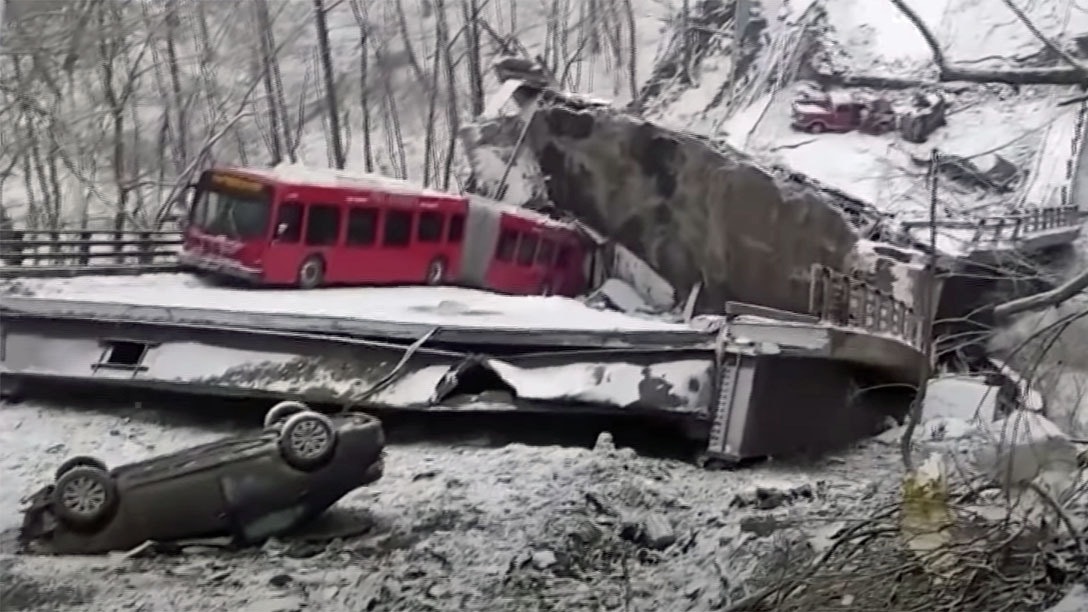More than 7% of Wyoming’s 3,114 bridges on Wyoming’s public roads are structurally deficient, according to the Federal Highway Administration’s National Bridge Inventory.
But the state lacks the money to pay for the necessary repairs to bring all of the deficient bridges up to code, according to state officials.
A bridge in Pittsburgh, Pennsylvania, collapsed last week, dropping a Port Authority bus and several cars into a park below and injuring 10 people. Pennsylvania ranks fifth in the nation for the percentage of bridges that are considered structurally deficient.
Wyoming, on the other hand, is ranked 20th in the nation in the percentage of its bridges considered structurally deficient, defined as a bridge where one key element is in poor condition.
“Deficient does not mean dangerous,” said Mark Madsen, a civil engineer based out of Cheyenne who serves on the Wyoming Workforce Council and is currently the Associate Vice President of the Wyoming Contractor’s Association.
“It’s deficient, meaning it needs upgraded,” he said.
Roy Cohee, former state House Speaker who served in the Legislature from 1999 to 2010, told Cowboy State Daily that reliable roads and bridges are very important for companies like the one his family owns, C&Y Transportation.
“In my family, we’ve been in the heavy trucking business for 53, 54 years,” he said, “and highway safety and the construction and the maintenance of it was incredibly important to us.”
Cohee said reliable roads and bridges are critical for a state like Wyoming in the absence of multiple transportation options.
“We don’t have much public transportation, no trains, no intrastate air travel, so people have to drive,” he said. “It’s important to be sure that the highways are constructed properly in the first place, but maintained to the point that they will last a good long time.”
The state has identified needed repairs on 1,216 bridges at an estimated cost of $529.4 million.
However, the state’s budget in the last few years has seen a steep decline due to a decrease in mineral royalties, cutting into the amount available for such work.
“Just four or five years ago, we were only replacing four bridges a year,” Madsen pointed out. “I mean, just doing simple math, we’re expecting a bridge to last 400 years.”
But in those same four or five years, the state has made progress. In 2017, 291 bridges in Wyoming were classified as structurally deficient – in 2021, that number was down to 230.
“As a former member of the Wyoming Legislature, like anything, things are prioritized,” Cohee said, acknowledging the lawmaking body’s historically conservative attitudes towards spending.
“Wyoming’s Legislature doesn’t like to tax much. It’s very, very difficult to get anything through our revenue committee, let alone the legislature,” he said. “So it’s tough to get the Legislature to agree to any type of enhancement to taxation, even if the infrastructure is, frankly, in need of some additional funds. It’s very difficult for them to even consider a fuel tax.”
Cohee added that the legislature has to consider the spending needs for programs other than transportation, even if highway safety casts a long shadow on the state’s culture and economy.
“They recognize that fine balance, about what needs to be funded with public resources, highways being one of them, but you have community colleges, you have public schools, and many other things, water development, all of those things take money. But the Legislature then, and I’m sure now, realizes that without a decent highway system, a state where the people move from one place to the other is incredibly important, particularly for Wyoming’s people.”
Cohee said he was confident the Wyoming Department of Transportation would be able to keep highways and infrastructure safe for traffic.
“Coming from that industry group, I always felt that Wyoming did a really, really good job that entire time that we were in that business keeping track of their highways and the construction and the maintenance of it, and have done an extremely good job,” he said.
Paul “Cactus” Covello, former chair of the Wyoming Transportation Commission and current member of the Wyoming Business Council, agreed that WYDOT and its partners have a good handle on the safety of Wyoming’s highways and bridges.
“I like to think that the engineers in the state’s departments do a pretty good job of inspecting the bridges on a pretty regular basis,” Covello told Cowboy State Daily. “Obviously, in our state, some of them have a little bit of age on them, but you’ll find that they’re out looking at them pretty closely.
“I know, here in Goshen County, they’ve done an extensive job of going out and inspecting bridges for wear and tear,” Covello continued. “Now, oftentimes on the overpasses and stuff like that we have trucks come along and do some damage, but I think for the most part bridges are in pretty good repair.”





